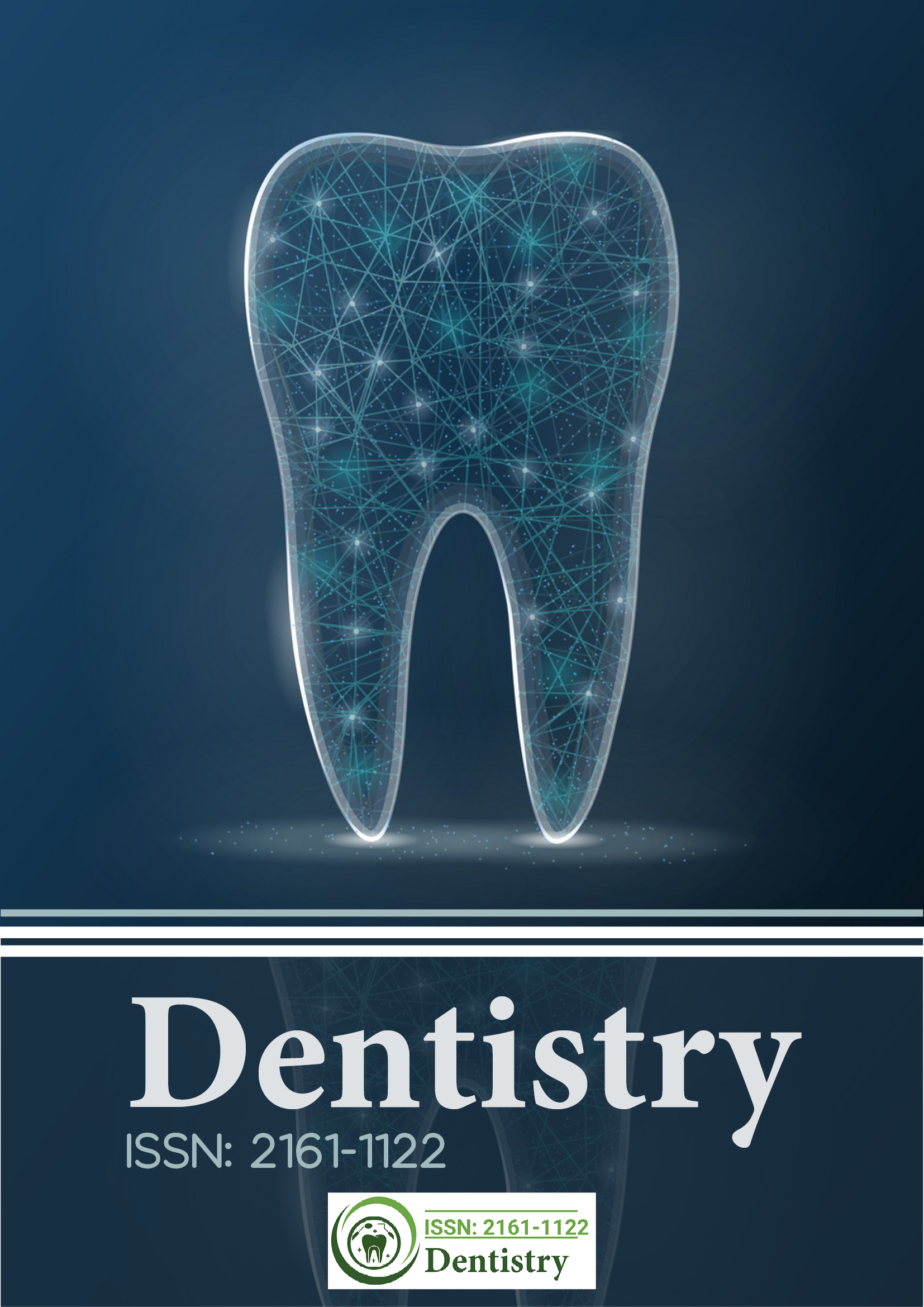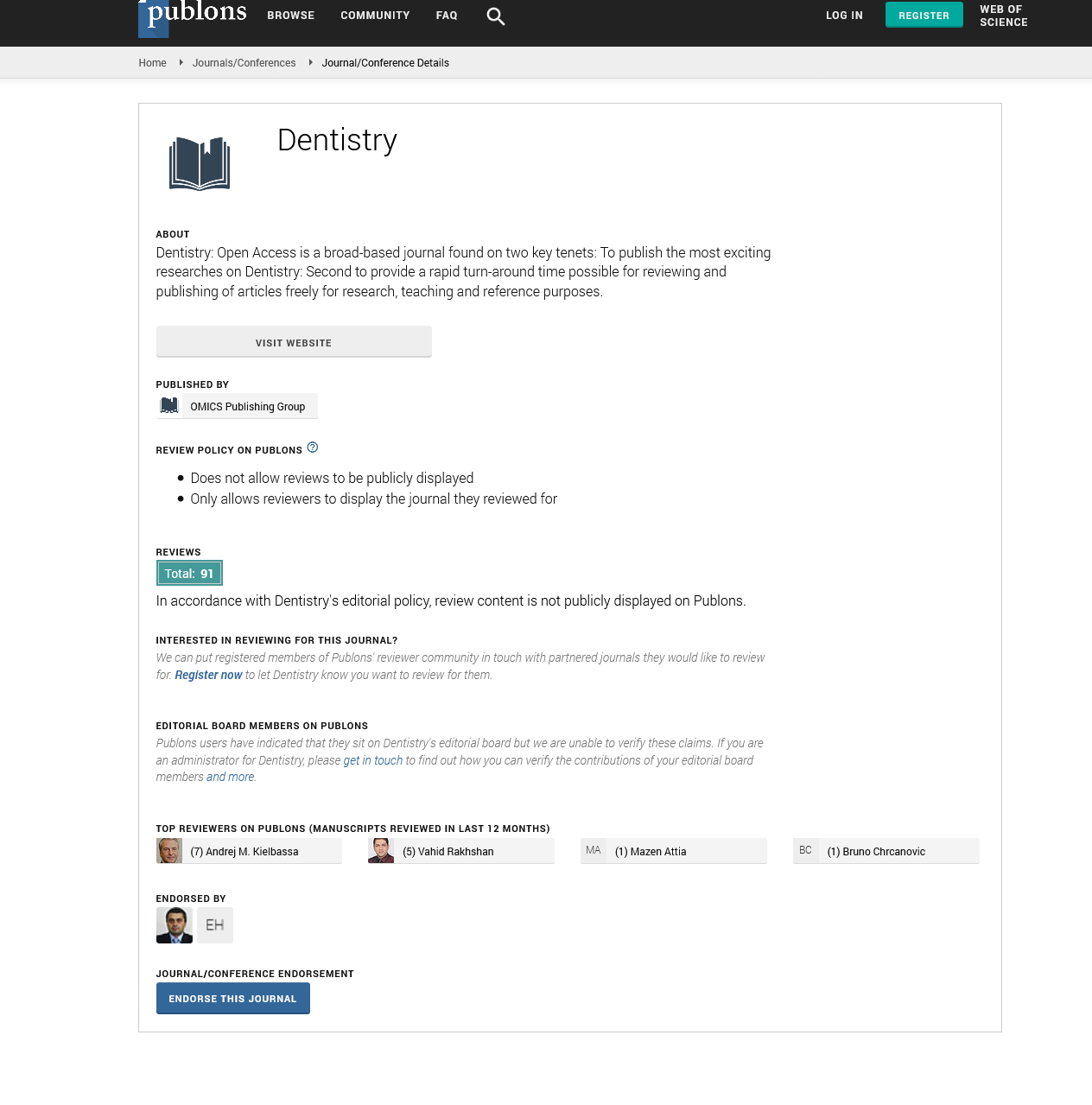Citations : 2249
Dentistry received 2249 citations as per Google Scholar report
Indexed In
- Genamics JournalSeek
- JournalTOCs
- CiteFactor
- Ulrich's Periodicals Directory
- RefSeek
- Hamdard University
- EBSCO A-Z
- Directory of Abstract Indexing for Journals
- OCLC- WorldCat
- Publons
- Geneva Foundation for Medical Education and Research
- Euro Pub
- Google Scholar
Useful Links
Share This Page
Journal Flyer

Open Access Journals
- Agri and Aquaculture
- Biochemistry
- Bioinformatics & Systems Biology
- Business & Management
- Chemistry
- Clinical Sciences
- Engineering
- Food & Nutrition
- General Science
- Genetics & Molecular Biology
- Immunology & Microbiology
- Medical Sciences
- Neuroscience & Psychology
- Nursing & Health Care
- Pharmaceutical Sciences
Fluoride releasing ability of different restorative materials after shortterm fluoride treatment
27th Euro Dentistry Congress
October 25-27, 2018 | Prague, Czech Republic
Minh-Huy Dang,Ji-Eun Jung and Jae-Gyu Jeon
Chonbuk National University,Republic of Korea
Posters & Accepted Abstracts: Dentistry
Abstract:
Fluoride releasing materials have been widely used in dentistry because of their satisfactory esthetic properties, biocompatibility and cariostatic properties. Furthermore, the recharge of fluoride from varying degrees of fluoride in oral hygiene products may contribute to the ability of these materials to provide a long-term caries inhibitory effect. However, little information is available on fluoride releasing ability of different restorative materials after short-term fluoride treatment, which simulates three times daily regular use of fluoride toothpastes or fluoride mouthwashes. The aim of this study was to evaluate the difference between fluoride releasing ability of different restorative materials before and after short-term fluoride treatment. Four restorative materials were used in this study: fluoride-releasing composite resins (FRCR), a resin-modified glass ionomer cement (RMGIC) and two conventional glass-ionomers cements (GIC). Each specimen was placed into artificial saliva (AS) and the initial fluoride ion release was measured for 10 days using a fluoride ion-selective electrode. After 10 days, each specimen was then treated with 1,000 ppm F- for three minutes. All treatments were applied three times a day for four days (a total of 10 times). After fluoride treatment, the amount of fluoride re-release was also determined during the experimental period. Collectively, restorative materials with higher initial release have higher recharge capability (RMGIC>GIC>FRCR). Each different restorative material has the capacity to re-release a constant concentration of fluoride ion for one hour after short-term fluoride treatment. Moreover, fluoride recharge ability may occur on outer surface of restorative materials than inner surface.
Biography :
Minh-Huy Dang has completed his MD and Doctoral studies from School of Dentistry, Chonbuk National University. He is the Member of BK21 PLUS Program, a human resource development program initiated by the Korean government. He has published three papers in reputed journals including Caries Research, PLOS One, and Scientific Reports.
E-mail: minhhuydangrhm@gmail.com

